As part of the recent expansion and capacity upgrade project at our London Central data centre, we have deployed another backup diesel generator, which joins the existing sets already providing protection to our clients.
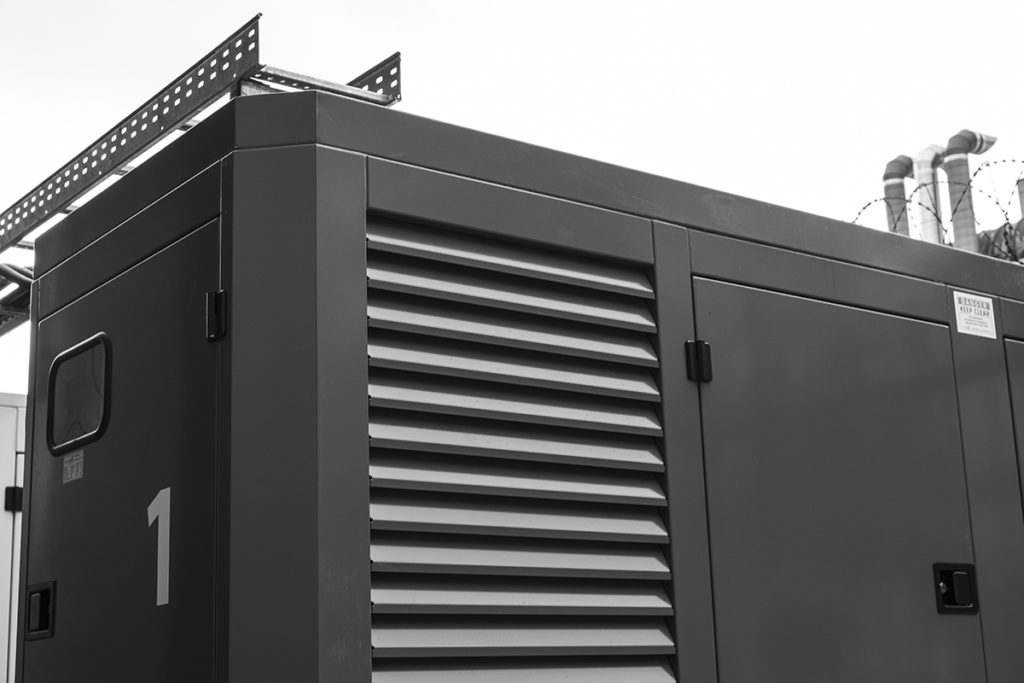
This ensures our N+1 resilience level on backup power is maintained as we continue to introduce new customers into the data centre, and provide ongoing scalable growth to those already with us.
The new set – while outputting the same level of power as its existing counterparts – is a next generation unit that we’ve had presented in an inverse colourway; anthracite grey. This stands in contrast to the existing units, which are in an off-white colourway. Of the three sets which now make up the full system, it is the smallest, quietest, and sleekest looking unit, perfect for demonstrating where we’ve made tangible upgrades to our critical infrastructure.
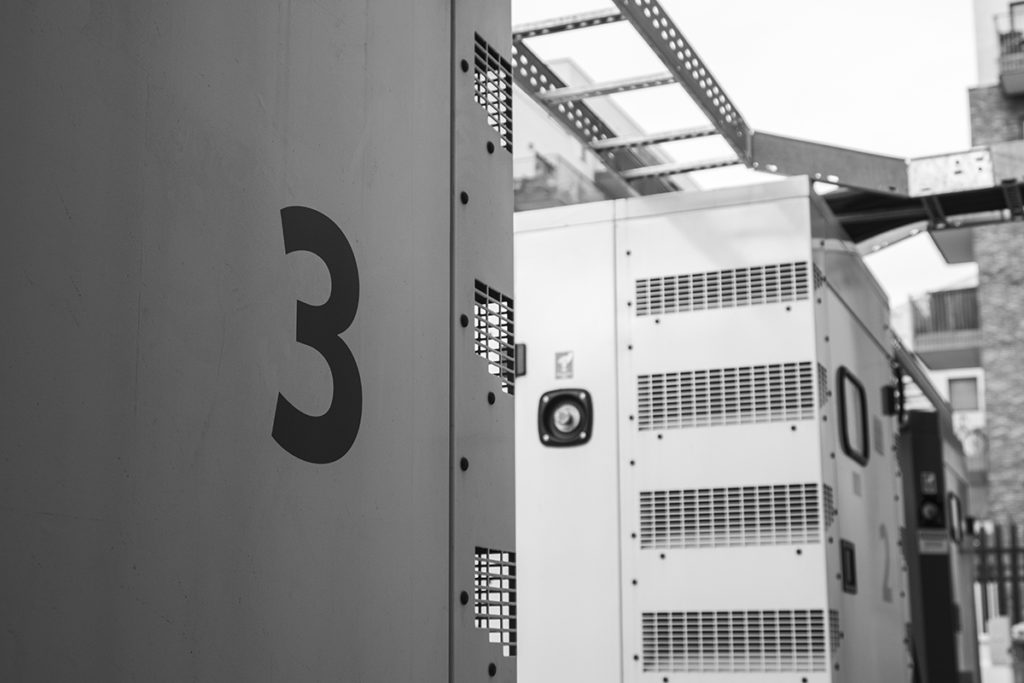
As part of this new deployment, we’ve adjusted how the setup works as a homogeneous system, with regards to the operational logic for running three sets in an N+1 fail-over scenario.
The new generator is actually now Set 1, with the existing units becoming Sets 2 and 3. This allows the newest set to become the primary unit in this multi-generator system.
How our generator system works
We’re not doing anything particularly ‘special’ when it comes to mixing in our backup generator sets, however in the interest of total transparency, we thought it of interest to explain exactly how this system works in real-world scenarios.
We have enough backup generator capacity on-site to cover full load in the facility on two sets, reserving one as a swing set. This can be called into service should one fail during emergency operation, hence giving us our N+1 resilience.
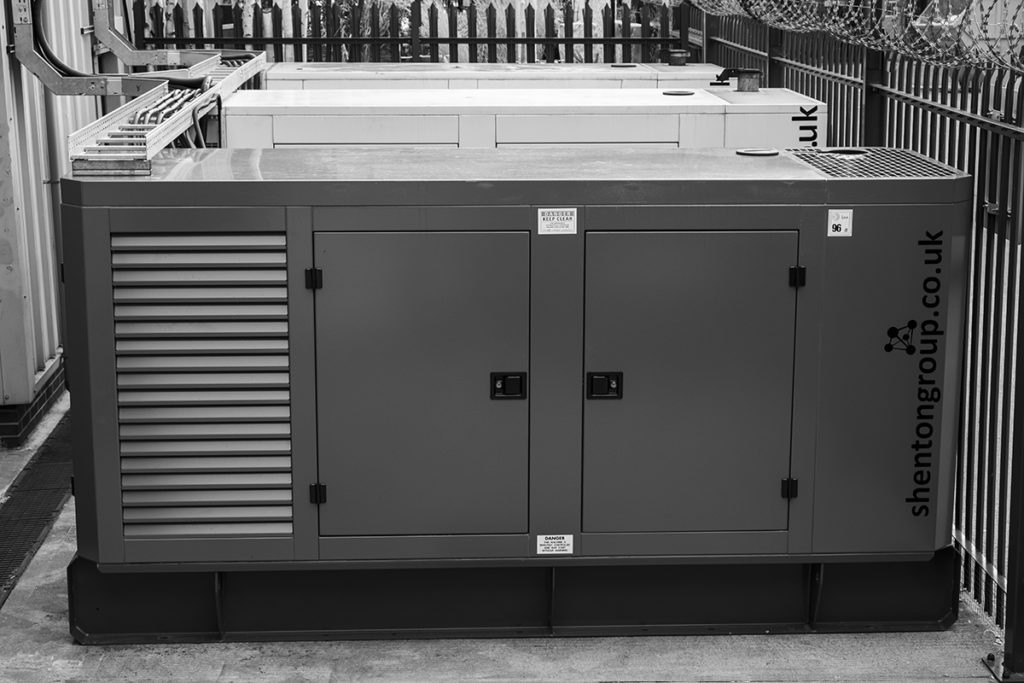
There are two main invocation scenarios in a facility with A+B mains power systems, which are:
- A single side power failure, either A or B (the most common)
- A full blackout of both A and B (less common)
The computer systems that control our generator logic (both inside the generators and as part of our Automatic Transfer Switches) handle each case slightly differently, depending on what has happened.
A single side power failure
As expected with any mains power issue, our UPS systems take load immediately to ensure faultless operation while the generators are instructed to start up. We have a minimum run-time on our UPS’s of 10 minutes, though most have more than 20 minutes in reality.
All generators as part of our system are kept on hot-standby, with all oils and pumps kept warm ready for the immediate firing of engines. In this state, the generators are known as ‘At Rest’, and available for service.
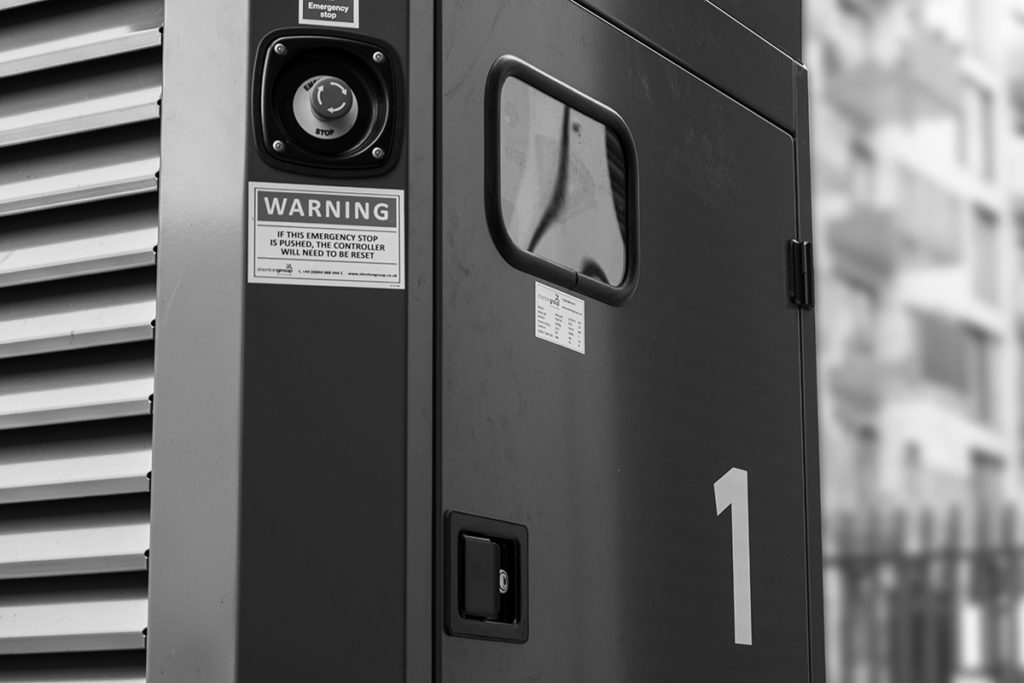
During a single side failure, two of the three generators will be instructed to fire, which will then startup, self-test, and synchronise with the sister unit.
If for any reason one unit fails to sync, the remaining swing set will be called up and take over, placing the other into a cool-down state.
Once online and synchronised, which takes around 60 seconds, the ATS’s will switch through the load, allowing the generators to take over from the inline UPS’s.
If the load is at below 60% of a single unit’s capacity, the system will then allow for the load to be taken up by a single generator, placing two units back into the swing pool, to be invoked again if required.
We’re then running on generator for as long as required, with 48 hours of fuel on-site, and refuelling contracts with two separate entities for refuelling within 2 hours.
Once the mains feed is seen to be restored by the system, it will hold on generator for another three minutes to ensure stability, before automatically switching back to the mains feed for load.
The online generators then enter into a three minute cool-down cycle, before dropping back into their ‘At Rest’ state, ready to be called up again if required.
A full blackout of both A and B
Although this is a less common real-world scenario, it is one of our test simulations, and invokes the generators in a slightly different manner.
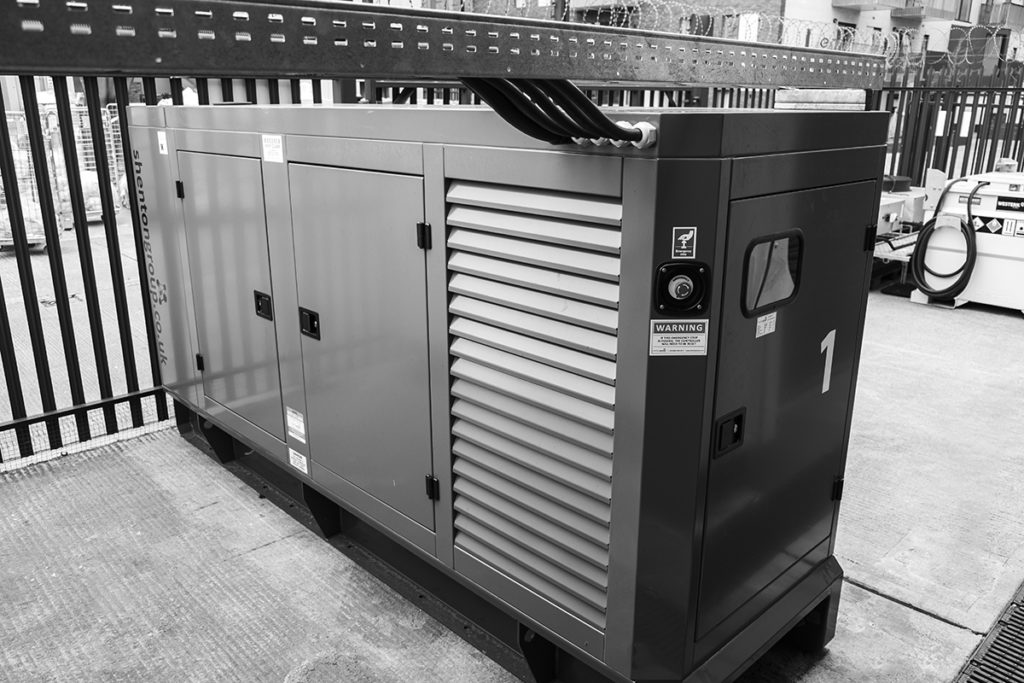
Should this occur, most actions as above remain the same, however in this case, all three generators would fire as part of stage one, rather than just two.
They will then test and sync together, and again have a set fall away to become the swing unit once the system is spun up and ready to take load.
In this way, the backup system is always able to both take load, and provide a swing set for resilience should there be an issue with a unit during emergency operation.
The entire system enjoys a rigorous testing schedule, which is incredibly important for a backup power system. Sets are test fired every two weeks and allowed to run warm for five minutes, checking for any running issues. We also complete on-load tests every month, to ensure the sets can take full load; an important step missed by many facility operators.
The system is also fully maintained by Shenton Group, the organisation responsible for the build, supply and initial testing, ensuring our units are in tip-top operational condition year-round.
What’s next?
That’s not the only upgrade coming as part of our backup generator system. The investment in this critical area continues in Q4, as we introduce a brand new mixing enclosure in our Electrical Intake Room, which will improve and update what is in place at present, finalising developments in this area in the mid-long term.
The new internal enclosure will allow for the use of next generator smart rotary breakers, something not presently in service as part of the current enclosure panel.
